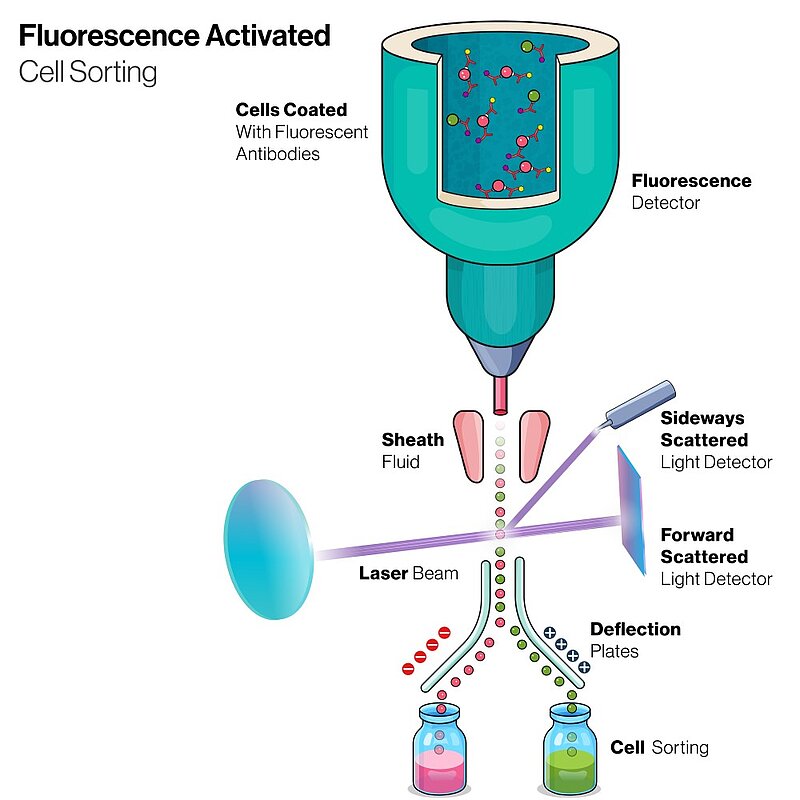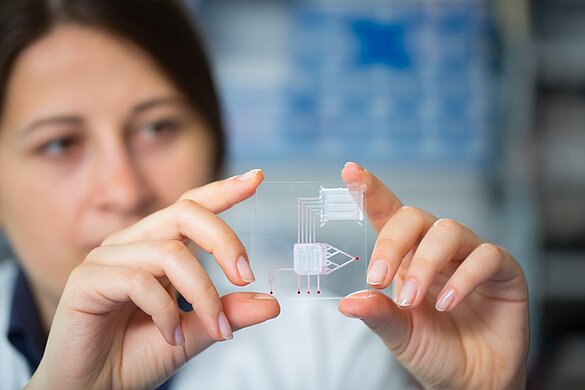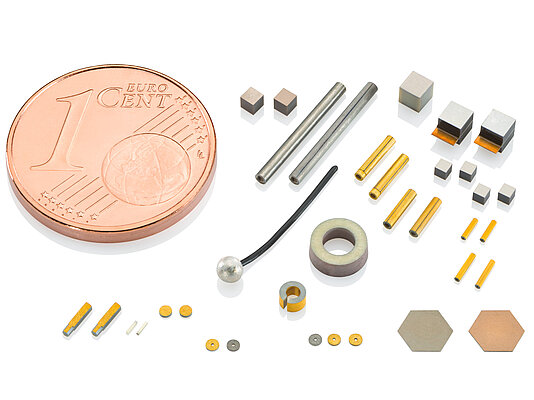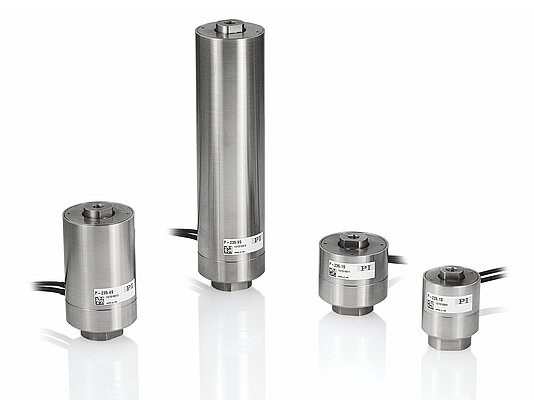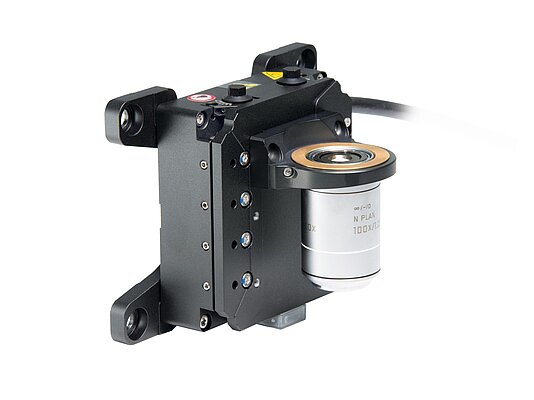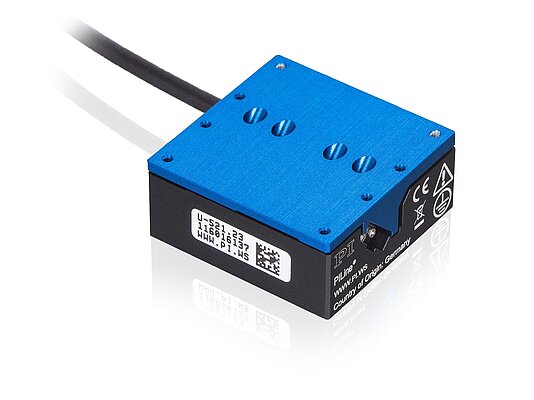Flow cytometry is a measuring and analyzing procedure with high throughput that is gaining more and more in importance in clinical routine diagnostics such as hematology, infectiology, and immunology. Large fields of application are basic research in medical and cell biology as well as biotechnology; here, the quantitative analysis of cells is one the most important applications.
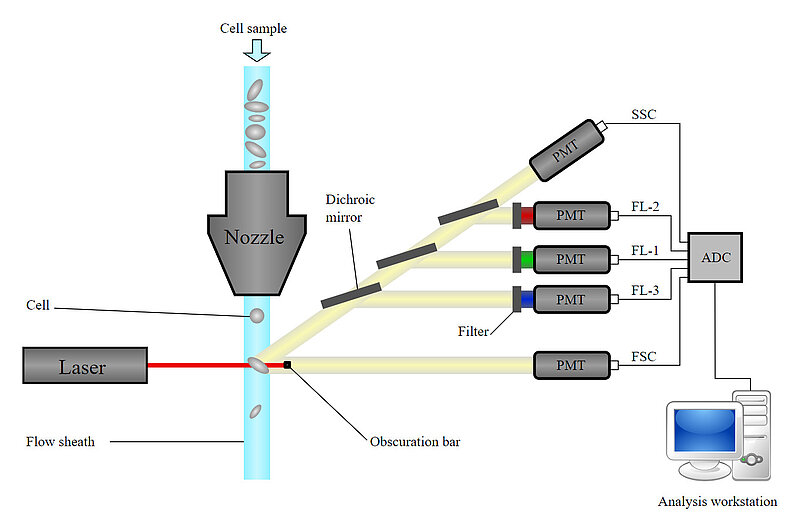
The basic principle can be changed in different ways to carry out special analyses. For example, the fluorescence-activated cell sorting (FACS), see image below, is a highly efficient possibility to differentiate and sort previously colored cells by their different characteristics.
An elegant possibility to remove single cells from the laminar liquid flow is by producing pressure gradients. Pressure impulses, for example, can be released in piezo diaphragm chambers that direct previously detected cells into a canal of the microfluidic chip on purpose. For this method and other microfluidic applications, PI Ceramic provides a large variety of piezo components.
In all devices, motion and positioning systems play a significant role for the speed and reliability of the analyses. Microfluidic chips, for example, are automatically positioned with µm precision into the respective retainers (chip loading), the chip and laser must be aligned (optical adjustment), and the chip has to be adjusted in relation to the collecting microtiter plates (sidestreams adjustment).
Depending on the complexity of the terminal device one or several motorized positioning elements are necessary for the different tasks. Besides performance parameters such as dynamics, travel range, precision, etc. external parameters, especially the size and shape, also play an important role in delivering the required performance in the available installation space.
PI supports the development of devices and equipment with a variety of technologies for motion and positioning. From miniaturized piezo components trough piezo stack actuators, compact piezo ultrasonic drive and magnetic direct drives, to complex multi-axis systems, PI can address the most diverse customer requirements. Because of standardized components and subsystems as well as its decade-long experience, PI can develop cost-optimized, device-specific solutions. In this way, PI realizes both individual solutions as well as a whole system of interacting solutions, covering all motion and positioning tasks in the device. With suitable controller technology, it is possible to ideally align motion sequences of even multiple subsystems to each other. Application-specific software and interfaces for common programming tools complement the offer.
From miniaturized piezo components to motorized linear stages, PI offers a large variety of products for positioning tasks in devices for flow cytometry

